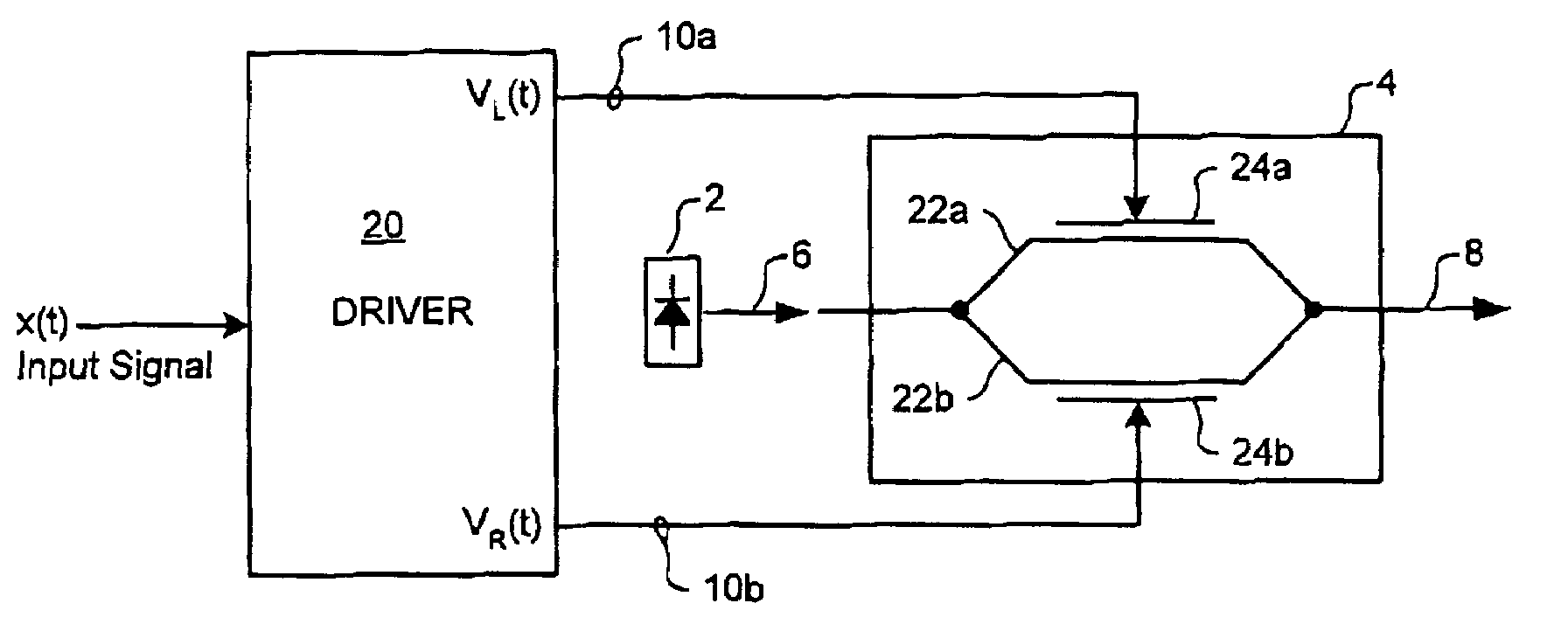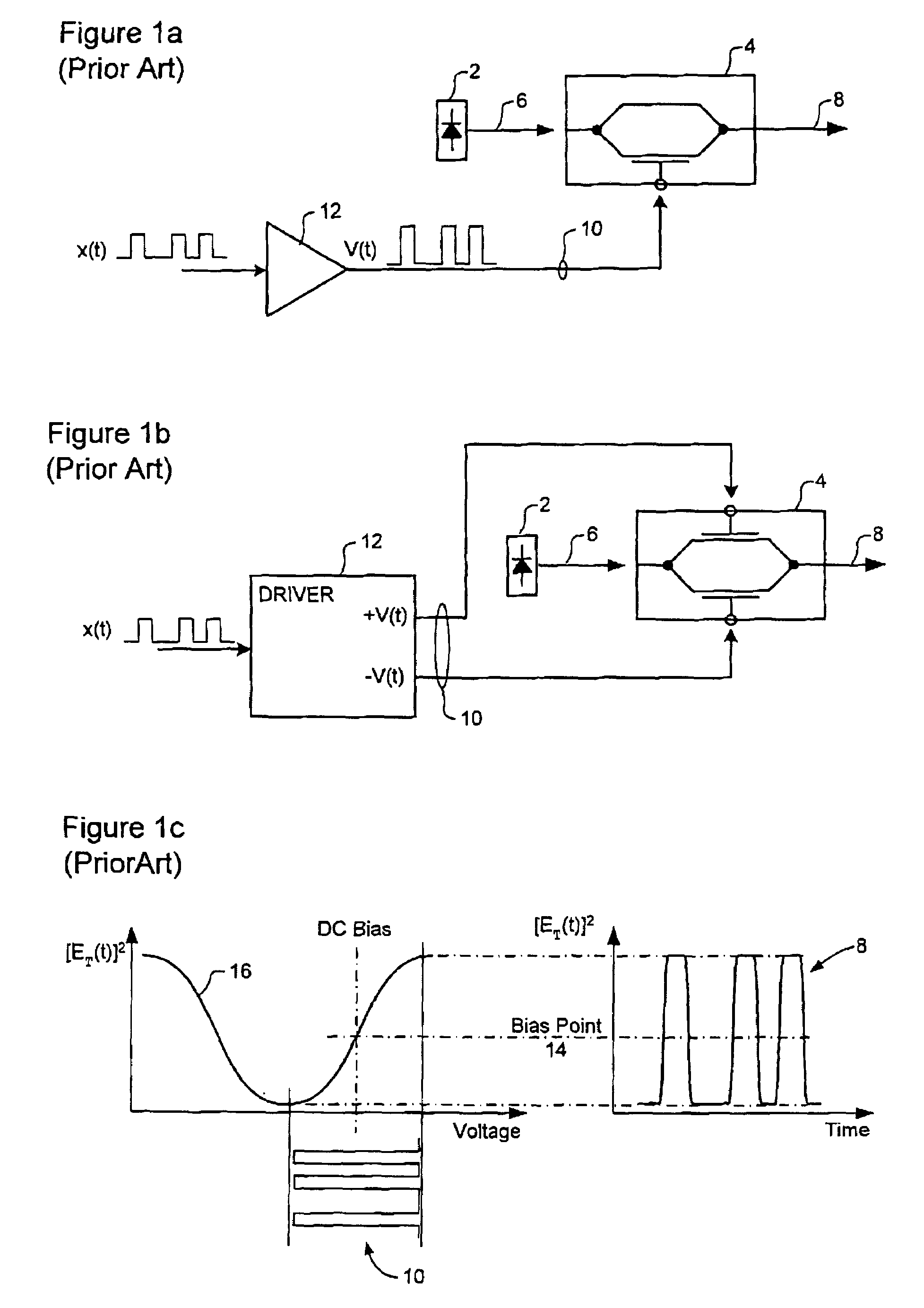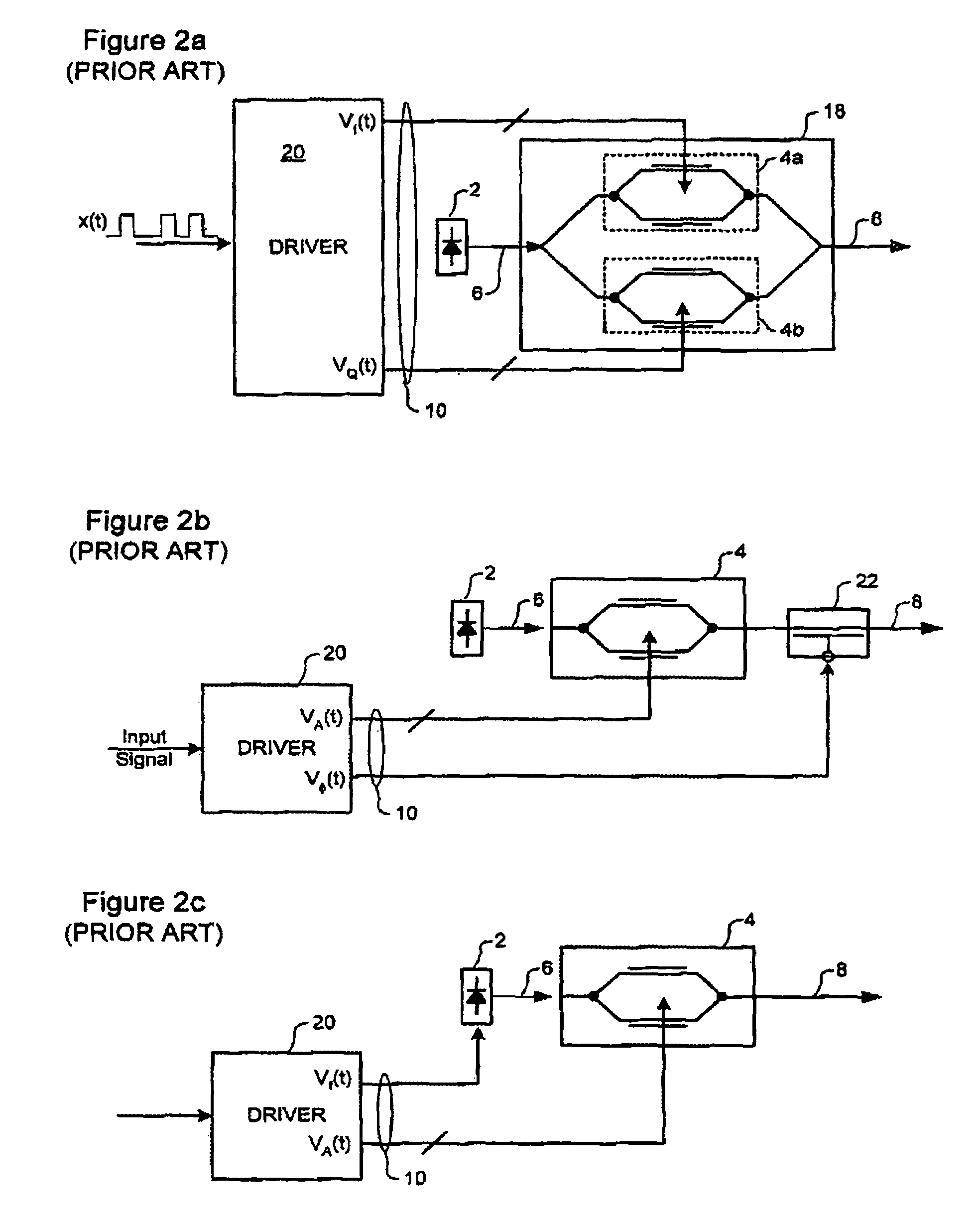Optical E-field modulation using a Mach-Zehnder interferometer
a technology of optical e-field modulation and interferometer, which is applied in the field of optical signal transmitters, can solve the problems of high cost, high cost of laser current control, and the inability to obtain the desired frequency modulation of the laser, and achieve the effect of facilitating the precompensation of optical impairment and low cos
- Summary
- Abstract
- Description
- Claims
- Application Information
AI Technical Summary
Benefits of technology
Problems solved by technology
Method used
Image
Examples
Embodiment Construction
[0024]The present invention provides methods and apparatus for modulating the E-field of an optical carrier signal. Embodiments of the invention are described below, by way of example only, with reference to FIGS. 3–5.
[0025]For the purposes of understanding the present invention, it is useful to consider a representation of the total optical E-field E(t) as a vector confined to a plane and emanating from a fixed origin, where the length of the vector gives the amplitude of the E-field at any instant (t), and the direction of the vector gives the phase of the field at any instant (t). Within this construction, we consider two basis sets. The first basis set is a Cartesian coordinate system centered on the E-field origin. In this Cartesian representation, the total E-field E(t) is decomposed along the orthogonal h-Phase (I) and Quadrature (Q) direction. The second basis set is a polar coordinate system, again sharing its origin with that of the E-field vector. In this poles representa...
PUM
| Property | Measurement | Unit |
|---|---|---|
| phase angles | aaaaa | aaaaa |
| phase angles | aaaaa | aaaaa |
| phase response | aaaaa | aaaaa |
Abstract
Description
Claims
Application Information
 Login to View More
Login to View More - R&D
- Intellectual Property
- Life Sciences
- Materials
- Tech Scout
- Unparalleled Data Quality
- Higher Quality Content
- 60% Fewer Hallucinations
Browse by: Latest US Patents, China's latest patents, Technical Efficacy Thesaurus, Application Domain, Technology Topic, Popular Technical Reports.
© 2025 PatSnap. All rights reserved.Legal|Privacy policy|Modern Slavery Act Transparency Statement|Sitemap|About US| Contact US: help@patsnap.com



